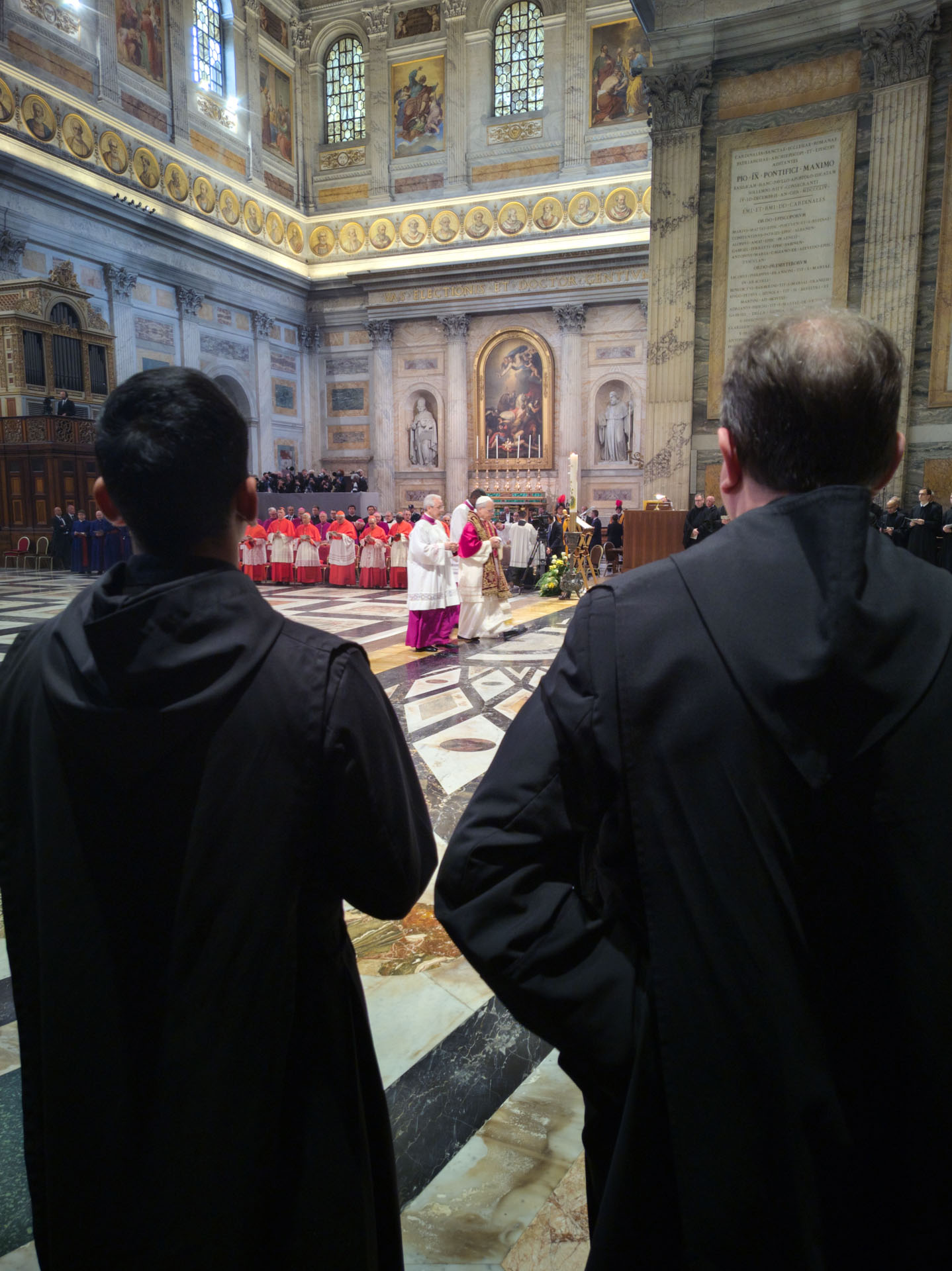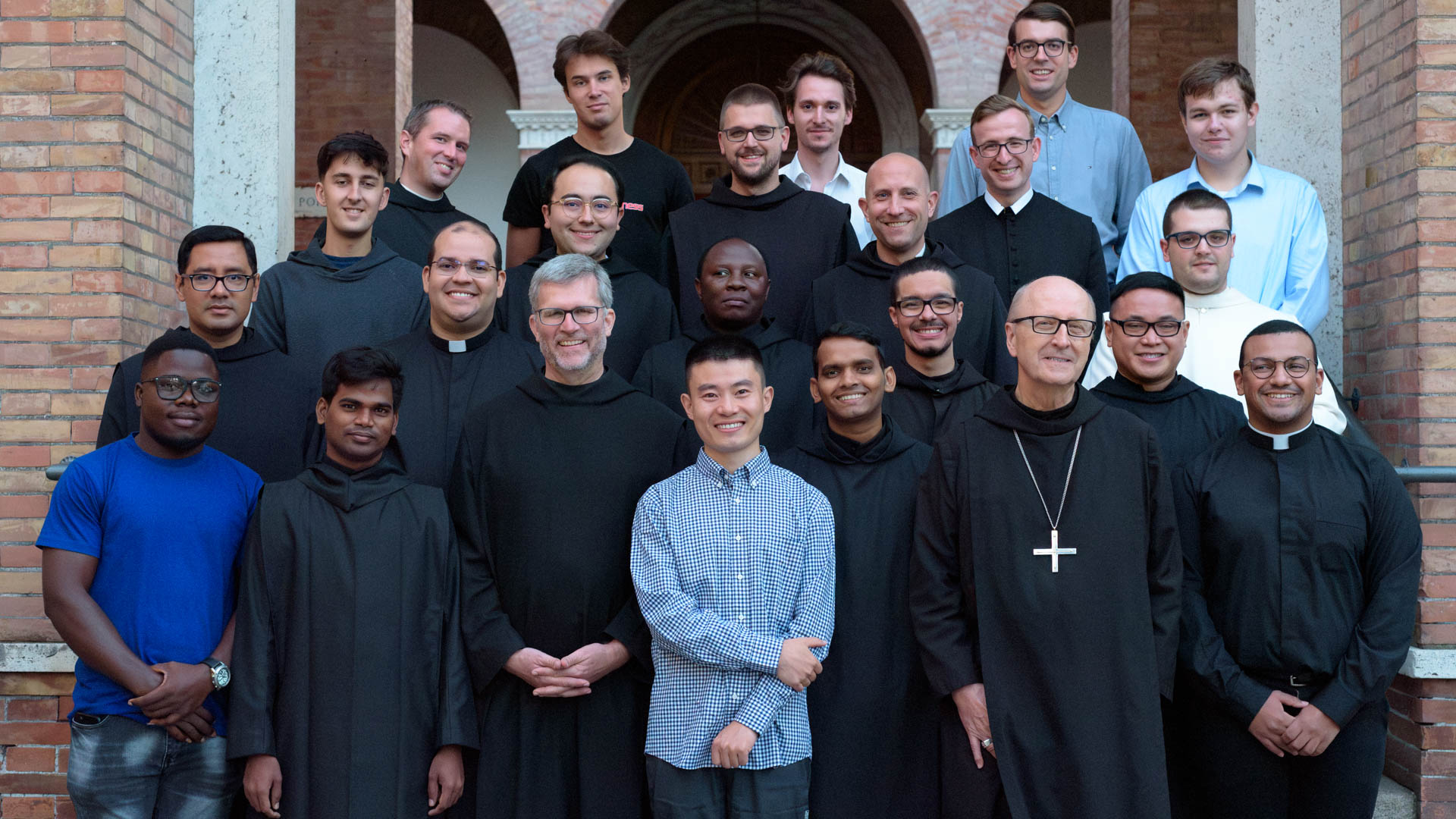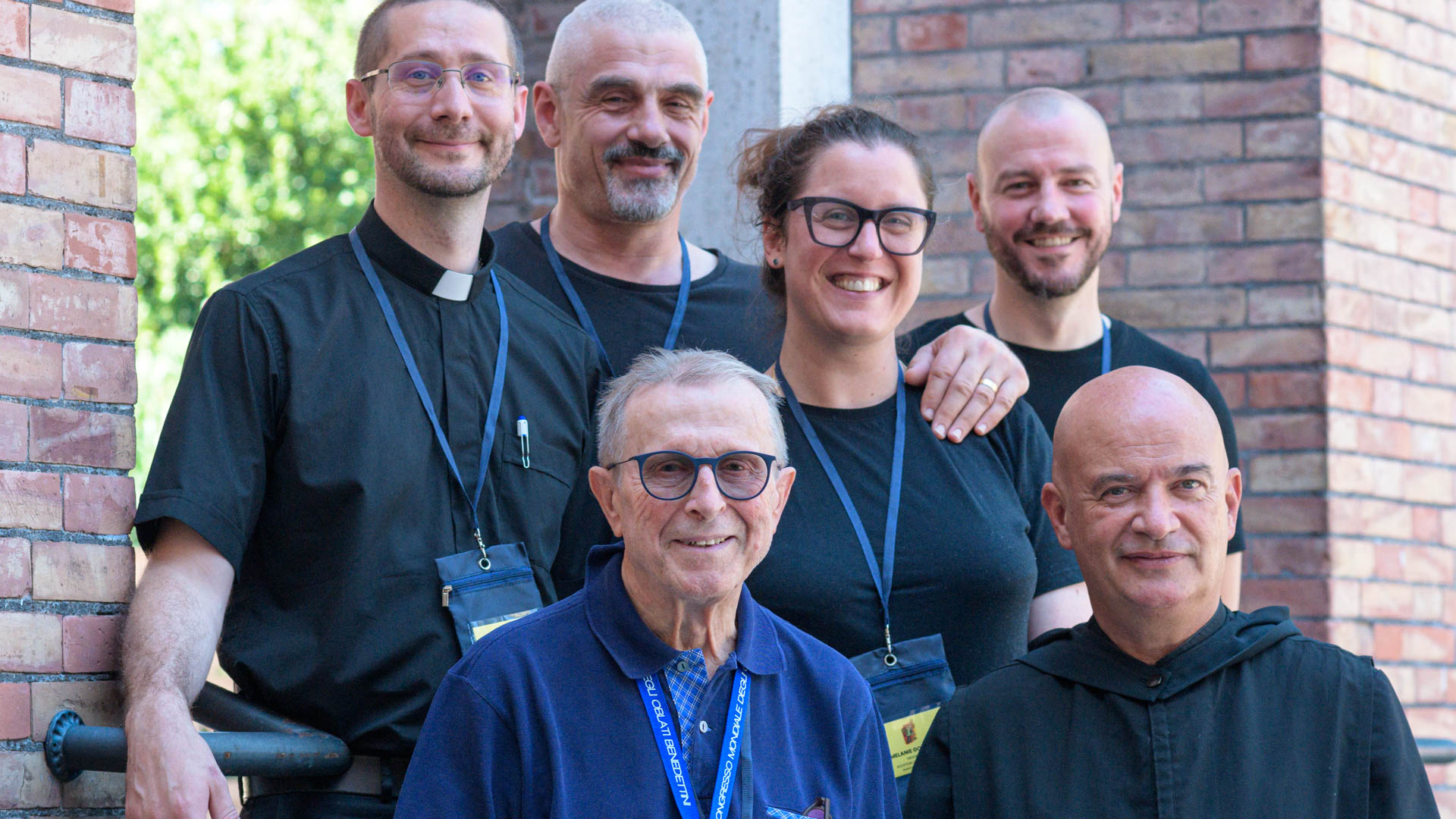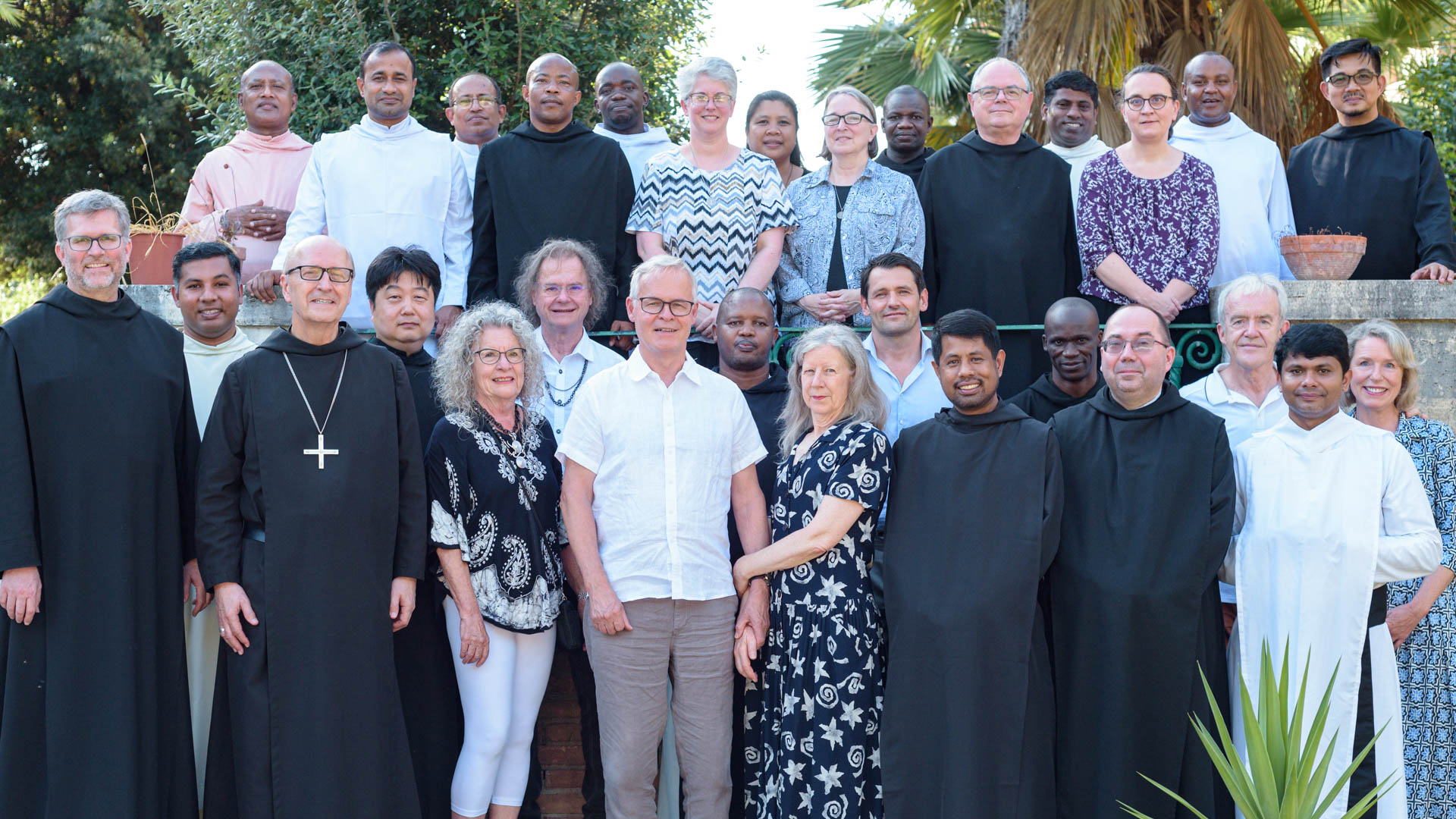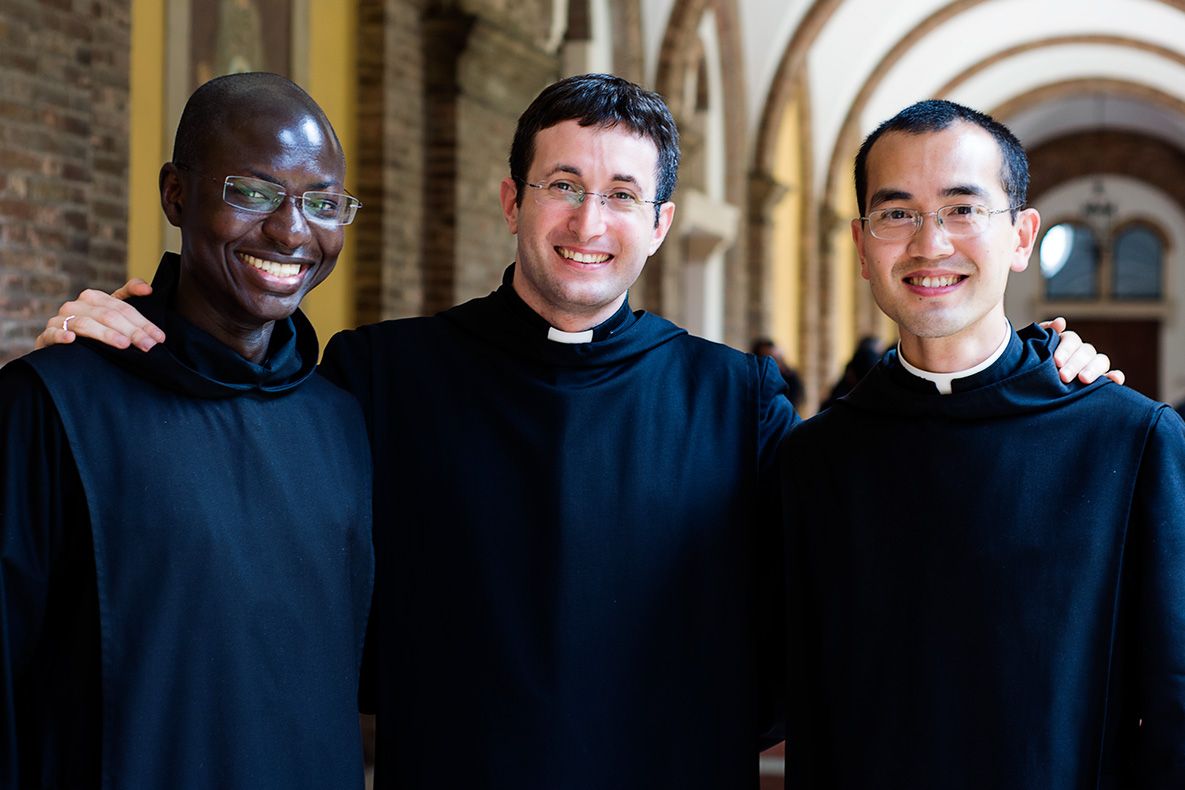26 May 2025
On Tuesday, 20 May, the new Holy Father, Pope Leo XIV, formally took possession of the Papal Basilica of Saint Paul Outside the Walls in Rome. Among those present were around 30 monks from the Collegio of Sant’Anselmo, led by Abbot Primate Jeremias Schröder. Their presence — both liturgical and symbolic — was a quiet testament to the ongoing Benedictine role in the life of the Church’s centre.
The event included a special contribution by six members of the Sant’Anselmo schola, who joined the Basilica’s resident choir at the invitation of its choirmaster. The inclusion of monastic chant underlined the depth and continuity of Benedictine liturgical tradition in the modern papacy.
Upon his arrival at the Basilica, Pope Leo XIV was received by the Abbot Donato Ogliari, and the Archpriest of the Basilica, Cardinal James Michael Harvey. Abbot Primate Jeremias also was able to greet him personally, along with members of the community of Saint Paul. Together with the Benedictine monks, the Pope entered through the Holy Door and proceeded in solemn procession towards the apse. There, he descended to the Confession and offered veneration at the tomb of Saint Paul the Apostle. It was a moment rich in significance, one that connected the Petrine office with the legacy of the Apostle to the Gentiles.
Following this act of devotion, Pope Leo XIV addressed the assembly and introduced a reading from the Letter to the Romans. In his homily, the Holy Father reflected on the universality of the Christian message, drawn from Romans 10:9-15. He reminded those gathered that belief and proclamation go hand in hand: “Believing in the heart and confessing with the lips. These two aspects—interior and exterior—are essential for faith to be lived and shared.” He emphasised that the Gospel must never remain confined to personal belief but must always reach outward through witness and charity. The Pope concluded by affirming that “we cannot resign ourselves to a world without hope, without Christ,” urging all present to be “credible signs of the joy and peace of the Risen One.”
After a brief silence, Pope Leo XIV once more approached the altar to venerate the Trophaeum of the Apostle, a monument traditionally believed to mark the burial place of Saint Paul.
The phrase “to take possession” of a basilica refers to an ancient custom signifying the new pope’s assumption of spiritual and ceremonial responsibility over the four major papal basilicas of Rome: Saint Peter’s, Saint John Lateran, Saint Mary Major and Saint Paul Outside the Walls. These basilicas have historically anchored the Roman Church’s liturgical and administrative life. Tuesday’s rite at Saint Paul Outside the Walls, the second largest of these after Saint Peter’s, marks another step in Pope Leo XIV’s formal assumption of the duties of the papacy. His second Regina Caeli will be celebrated on Sunday, 25 May, the same day he will take possession of the Basilicas of Saint John Lateran and Saint Mary Major.
For the monks of Sant’Anselmo, their participation in this historic occasion serves as a quiet but firm reminder of their place at the heart of the Church’s life—rooted in tradition, service and learning. It is also a visible invitation to all Benedictine superiors: to consider the Ateneo Sant’Anselmo and its Collegio not only as institutions of study and formation but as active participants in the rhythms of the universal Church.
Altre Notizie
On Sunday, 24 September, 26 new residents arrived at Collegio Sant’Anselmo from 14 countries. Our international character is at the heart of Sant’Anselmo and we believe that living, learning and praying with people from different cultures is one of our great strengths and joys. Story, statistics and photos here.
On Sunday, 10 September, The Fifth International Oblate Congress, entitled, “Moving Forward: Living the Wisdom of The Rule”, began with an opening welcome by Abbot Primate Gregory Polan and a German Mass presided by former-Abbot Primate Notker Wolf. Story and photos here.
The Collegio was proud to host the Leadership and The Rule summer course again, in a successful venture that included 21 Benedictine, Cistercian, and Trappist monks and nuns. Watch the videos here.

